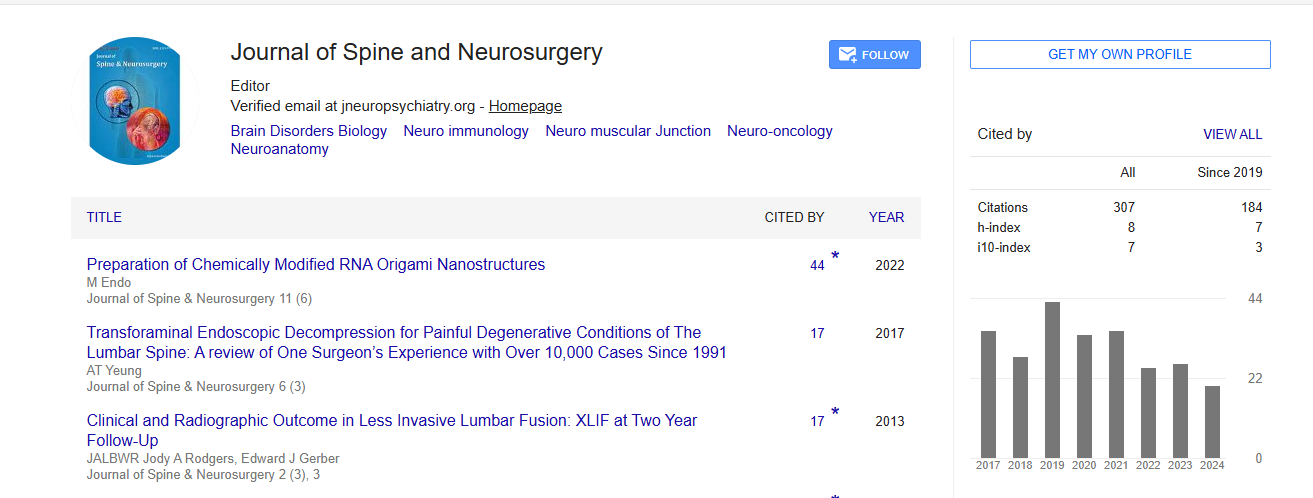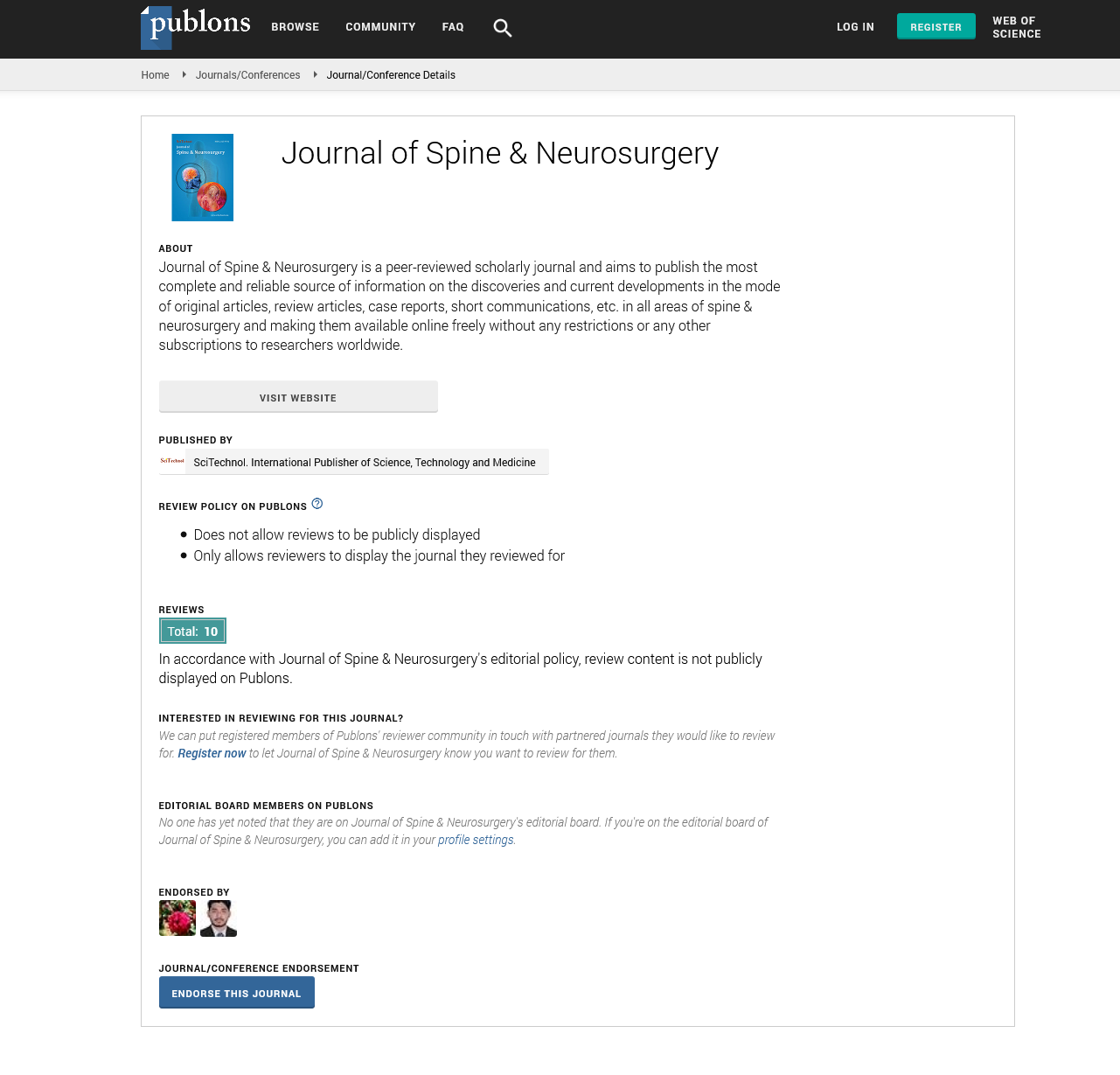A comparative study of the artificial disc replacement versus discectomy and fusion in the treatment of cervical discogenic cases
Mohamed A Fahmy Zeid
Alexandria University, Egypt
: J Spine Neurosurg
Abstract
Introduction: The specific indications, limitations, technique, pitfalls and complications of the procedure of Cervical Disc Arthroplasty (CDA), compared to (Anterior Cervical Discectomy and Fusion) ACDF and the relative predisposition of both procedures to the (adjacent segment disease) in process. However, radiographic evidence of Adjacent Segment Degeneration (ASDeg) following ACDF has been recognized to reach 50% within ten years, while the annual incidence of symptomatic adjacent segment disease (ASDis) is approximately 2.9%, the problem which inspired the development of motion sparing surgeries, of which CDA is still a debatable issue. Methods: This non-randomized clinical trial was conducted in the period between January 2015 and January 2017, on a group of 40 patients who suffered CDD, divided into two groups (ACDF and CDA groups), with 20 patients per each. Clinical outcomes were evaluated using the Visual Analog Scale (VAS) and the Neck Disability Index (NDI). Operative data, complications, hospital stay, return-to-work intervals and the pre-operative and six-months postoperative for the superior and inferior adjacent segments Range of Motion (ROM) and changes occurring to it were evaluated. Results: No statistically significant differences were found between the two groups regarding clinical outcome, functional scores, complications, hospital stay and return-to-work intervals (P>0.05). Operative time was significantly longer in CDA group (P<0.05), while ACDF group showed a statistically significant postoperative and preoperative difference in the mean ROM in the C5-6 superior and inferior adjacent segments, compared to the insignificant mean difference in the CDA group (P<0.05). Conclusion: Although not sufficiently proved to be significantly superior to ACDF, the surgical experience of CDA concerning the technique practice, specific indications, limitations, complications and postoperative outcome including the impact on ASDis, compared to the ACDF is not statistically differ, However, the gold standard, may ought to be included in the collective experience of any others modern neurosurgical center.
Biography
Mohamed A Fahmy Zeid has completed MBBCH in 1982, Master of General Surgery in 1987 and did Fellowship in the Department of Neurosurgery in 1994. He has completed his Doctorate degree in Neurological Surgery in 1994 and is the Member of Congress of American Neurological Surgeons in 2000. He has worked as House Officer in Ministry of Health Hospitals and Alexandria University Hospitals (1983-1984), Physician in the Ministry of Health Hospitals (1984-1987), Registrar of Neurosurgery in private hospital (1987-1988), Assistant Lecturer of Neurosurgical Department of Alexandria University Hospitals (1988-1994) and Chief Consultant of Neurosurgery in Saqr Hospitals, UAE (2000-2003). He is currently working as a Professor of Neurosurgery Department at Alexandria University, Egypt.
E-mail: fahmy1@gmail.com
 Spanish
Spanish  Chinese
Chinese  Russian
Russian  German
German  French
French  Japanese
Japanese  Portuguese
Portuguese  Hindi
Hindi 
